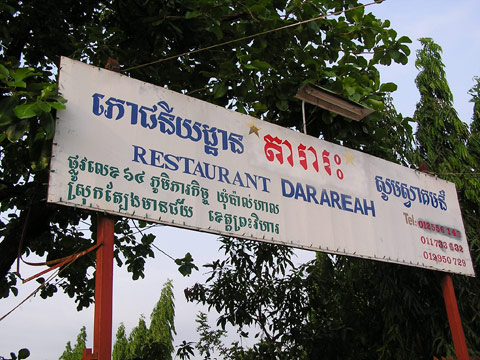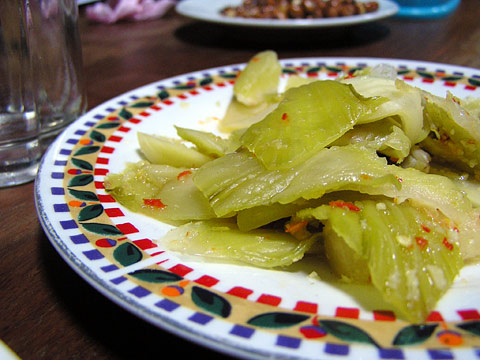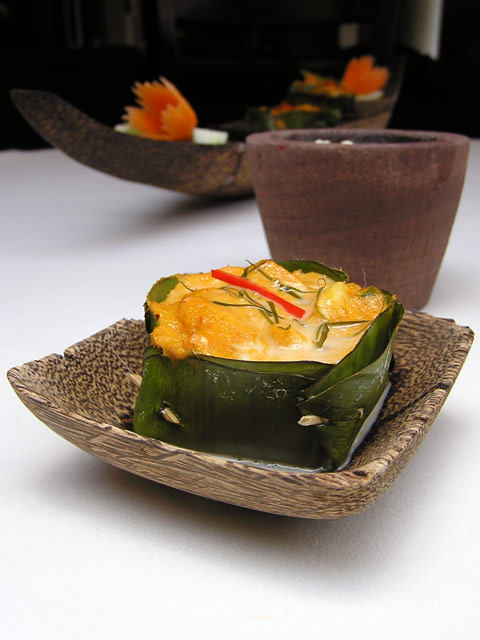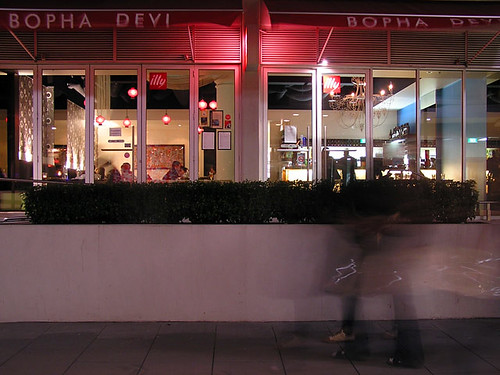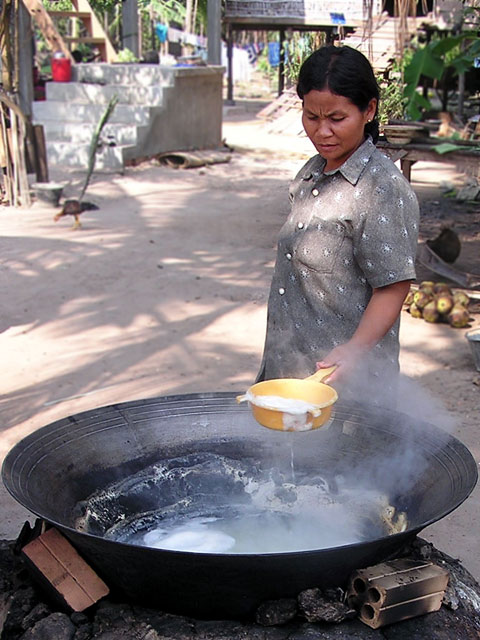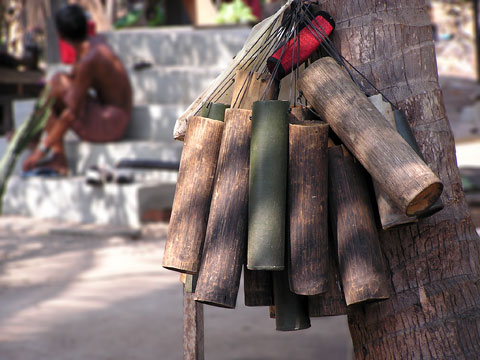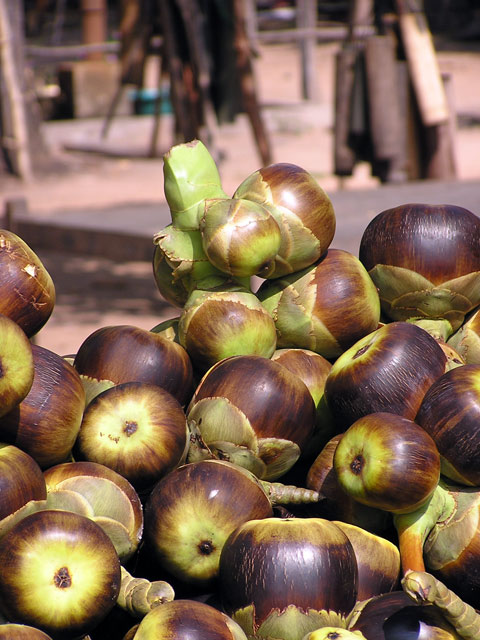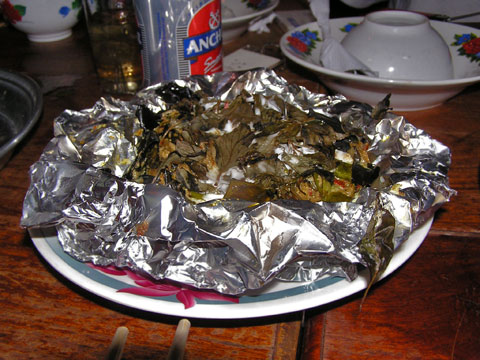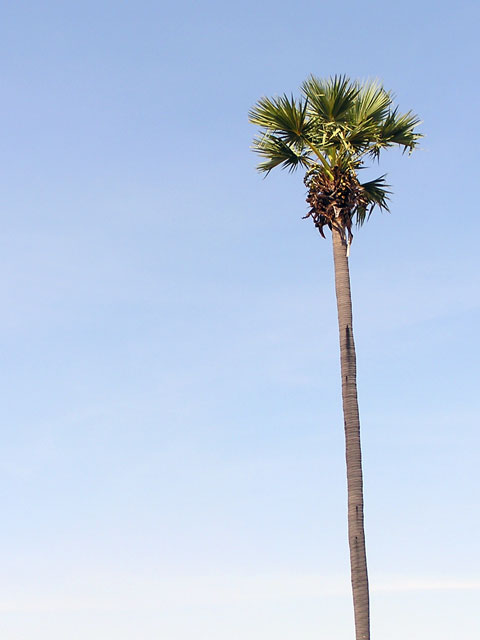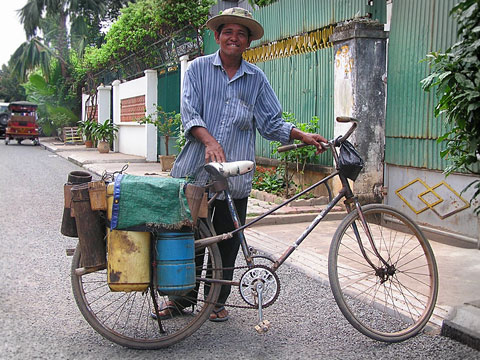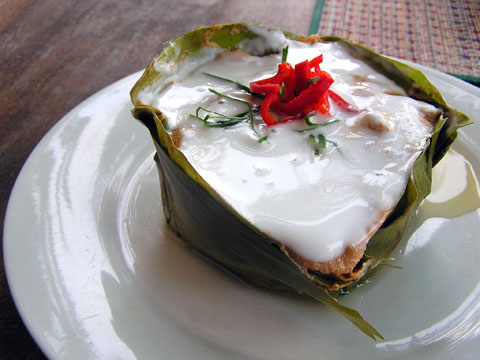I’ve been reticent about reviewing Cambodian wedding cuisine because regardless of how tenuous my link is to the happy couple, I’m still wary of reviewing private events lest friends stop inviting me to their houses to sample their attempts at cooking and imbibe their booze. If you spend any length of time in Cambodia, you’ll attend a wedding. They tend to be massive affairs held either in the gargantuan reception warehouses dotted around Phnom Penh or in a tent in the middle of the street, in front of a relative’s house. Knowing the bride or groom is not a prerequisite to being invited.
Cambodian wedding food constitutes a whole genre of its own and much like the wedding ceremony, it tends to draw on an array of foreign influences. In Phnom Penh, it’s not uncommon to have a Western-style, towering wedding cake, Thai tom yam soup, Chinese stir frys and a bottle of imported whiskey all at the same meal. Regardless of the food, the format of the meal is prescribed: set tables of ten (or eight in Sihanoukville*) are served as soon as they are seated. If your group is smaller than ten, random strangers will join your table or else you can join theirs as food will not be served until your table is full.
First comes a set of pickles and amusé (for lack of a better word), which in the past has included steamed pigs’ ears, cashew nuts, pickled vegetables, spring rolls, faux meats, and once, slices of Spam. A soup and a few mains follow that are shared by the whole table. The mains depend on the budget of the wedding, ranging from langoustine or whole steamed fish to stir-fried offal.
When I was in Tbaeng Meanchey in Cambodia’s north for a night, the only restaurant in town, Darareah, was booked out for a wedding. So instead of harassing the overstretched kitchen into cooking us something else, we ordered the wedding food.
These were some of the best Cambodian pickles I’ve ever eaten. Very simple garlic, chilli and mustard-y green. This far north in Cambodia, there is more of a preference for chilli-hot foods and the liberal use of chilli serves this pickle no disrespect.

Round 2: Stir-fried mixed vegetables with rehydrated pork skin.
The purpose of rehydrated pork skin is a mystery. After it is removed from the pig, the skin is deep-fried into thin sheets and then rehydrated when the mood takes you. It adds practically no pork flavour to anything and tends to lurk at the bottom of Cambodian soups and stir-frys, surprising diners with the mouthfeel equivalent of stepping on a beached jellyfish. Cauliflower turns up in the strangest parts of Cambodia and this place is no stranger.
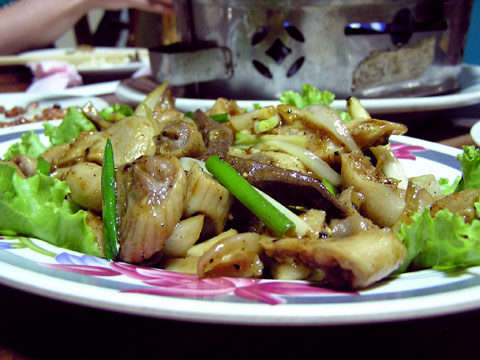
Round 3: Stir-fried pipes with pepper and sugar
Sweet, sweet offal candy! Along with watery sour soup and stirfried morning glory, this dish is one of the staples of Cambodian village travel. I’m not sure what one of the parts in this intestine stir-fry is, but I do know it comes from a pig. The other parts come from a pepper tree, sugar cane and the industrial glutamate factories of Ajinomoto.
The more time I spend travelling South East Asia, the more that I’m convinced that tom yam soup is becoming the South East Asian equivalent of pizza, a food that has become detached from its point of origin to become a regionally-specific genre of its own, for example Malaysian tom yam. This close to the Thai border however, Khmer tom yam is indistinguishable from Thai tom yam nam khon.
Location: Darareah Restaurant, next to the roundabout in Tbaeng Meanchey, Preah Vihear province. If you’re visiting the Preah Vihear ruins from the Cambodian side, you’ll inevitably eat there as dining options in the town are limited.
* – At an event with some coworkers in Sihanoukville, I asked why there were only eight seats per table in this province and ten in other provinces. ‘It’s lucky’ they answered. ‘It’s lucky because in Sihanoukville, we get to eat more food.’
